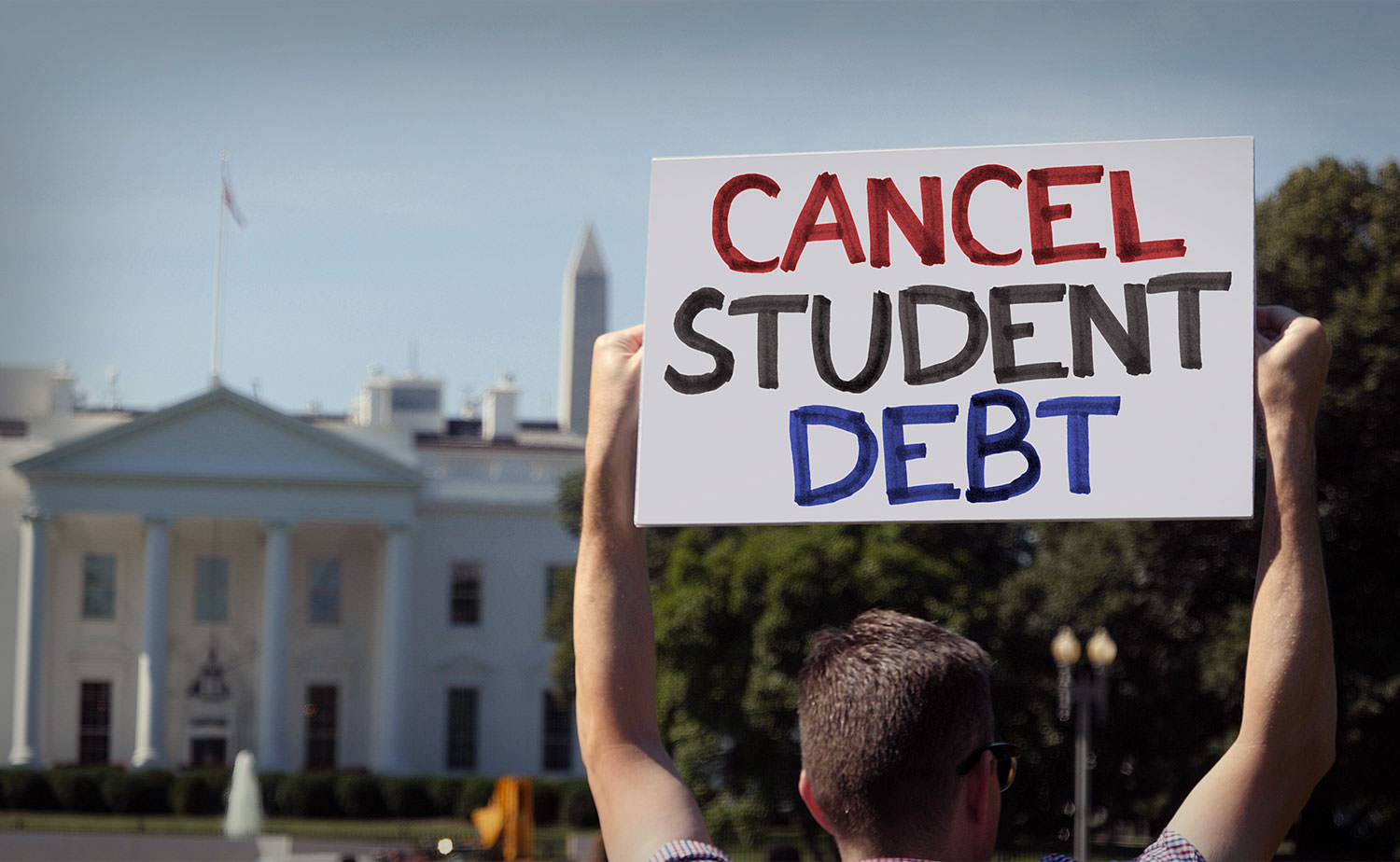College debt is approaching $2 trillion, more than all other types of household debt except mortgages. Fueled by tuition that exceeds $25,000 a year (room and board adds another $11,000), Federal student loan debt averages more than $37,000 among those with any student debt.
Following a hiatus of more than 3 years, 45 million Americans have had to resume repaying their student loans in October. For those struggling to pay their bills over the past 3 years, this additional burden (averaging around $500 per month) will require large spending cuts and will bring additional financial stress. It will also affect the jobs they can take, where they can afford to live, and whether they can buy a home or save for retirement.
Worse yet, many Americans have made payments regularly but have seen little change in their student debt balances because illness, caregiver responsibilities, or unemployment forced them to miss some payments. Twenty years after graduation, half of student borrowers still owe more than $20,000. This debt cannot easily be dismissed via bankruptcy. At retirement, any remaining balances get taken out of Social Security benefits. It should be clear to everyone that tens of millions of Americans are being crushed by their student debt.
In contrast, college debt is not a problem in Europe. Residents of Denmark, Finland, Germany, Scotland, Slovenia, and Sweden enjoy free tuition. Elsewhere in Europe tuition varies from a few thousand dollars to around $7,000 per year.
Until the 1980s the situation in the US was similar– college education was relatively cheap. The annual cost of attending a public university– tuition, room and board– was around $9,000 (in 2023 dollars). As in Europe today, college graduates typically had little difficulty repaying their loans. A college education was an opportunity to better oneself and achieve a middle-class existence.
College costs in the US then soared, increasing more than almost everything else. Tuition, room and board is now several times what it cost in 1980 even after controlling for inflation.
Different mindsets can explain the difference between Europe and the US.
Europe sees college education as an investment in the future and a government responsibility. Some benefits are political. A more educated population is more likely to vote and be better citizens. There are also economic gains. College graduates make more money, and are more likely to make discoveries that enhance everyone’s life. To secure these gains, European governments keep tuition low, which both encourages college enrollment and keeps down college debt.
This mindset was predominant in the US until the 1980s, when a college education began to be viewed in terms of personal gains. Consequently, we made people responsible for financing their education, rather than having taxpayers foot the bill. And these individual gains are huge. An average US college graduate earns $1 million more during their working life compared to someone without a college degree. It is tempting to come after some of this money.
Colleges have done so through extravagant spending– money-losing sports programs, new classroom buildings and residence halls, and even spas for students. Such amenities boost US News & World Report college rankings and attract more students. But this spending must be paid for. So tuition skyrockets and students incur more debt. This is one reason college costs have increased so much in the US compared to Europe. But political factors have also been at work and have been more important.
Starting in the 1980s, politicians came after some of the $1 million by cutting funding for higher education. They figured out that colleges would raise tuition, and students would borrow more money. By spending less on higher education, money was freed up for tax cuts, thereby helping politicians get re-elected or elected to a higher political office.
This is why state funding for public higher education has plummeted over the past 4 decades. The University of Virginia received nearly 30% of its funding from the state government in the post-WWII era. Today the figure is just 10%. Higher tuition made up for most of this lost revenue. The cost of a college education was successfully shifted from affluent taxpayers to students struggling to improve themselves and live the American Dream.
To prevent a winnowing of the benefits from a college degree requires dealing with two problems simultaneously– large college debt and high college costs. Reducing existing debt won’t solve the cost problem. Instead, things will only get worse. Colleges will hike tuition, forcing students to incur more debt while hoping for future debt relief. On the other hand, cutting college costs won’t help those presently struggling to repay their college loans.
Solving the cost problem requires reversing the main cause of rising college costs since the 1980s– less government support. If higher education benefits the entire nation, the nation should pay for a large chunk of it. Aid must return to the levels from decades ago. But aid cannot be unconditional. More government support should be made contingent on reduced tuition and other college costs.
The debt problem is more complex, but has a solution– income-based repayment. Under this program, those gaining a great deal from their college education, substantially funded by the government, will repay all their student debt (as happens today in practice). Those making little additional money will repay little of their debt.
Income-based repayment has many virtues. It reduces penalties on those trying college but not getting a degree. It doesn’t discourage public service or people taking low-paying jobs because large college debt has to be repaid. Furthermore, income-based repayment provides a form of insurance to everyone. Large declines in income, due to economic conditions, caregiver responsibilities or health issues, will not cause college debt to pile up and will not further squeeze someone who is already financially strapped.
The US established an income-based repayment plan in 2007. The Bush administration capped payments at 15% of income, with any remaining debt forgiven after making payments for 25 years. The Obama administration liberalized the plan in 2012, with payments not required by those making under $20,000 a year, payments capped at 10% of income, and remaining debt forgiven after 20 years of making required payments.
In August, shortly after the Supreme Court declared his debt-forgiveness plan unconstitutional, President Biden rolled out the SAVE (Savings on a Valuable Education) plan. It reduces repayments from 10% to 5% of income (for undergraduate debt only; graduate and professional school debt still requires repayment equal to 10% of income). Individuals making under $32,800 (or families of 4 with income below $67,500) will pay nothing. Borrowers originally owing $12,000 or less will receive loan forgiveness after 120 payments (10 years). Each additional $1,000 borrowed adds an additional year of payments up to a maximum of 20 years.
When this plan becomes effective in July 2024, the typical graduate from a public university will save around $2,000 per year. Gains for those attending private universities will be even larger.
One problem with SAVE is that colleges can increase their tuition, knowing that students will borrow more since lower repayment obligations mean that most of the additional borrowed money won’t have to be repaid. This is why it is important to solve the debt and cost problems simultaneously, and why the states need incentives to provide more support to their universities. If some states refuse to do this, the Federal government can provide money to schools that reduce their tuition.
Another problem is getting people to sign up for benefits. Take-up rates have been low for previous income-based payment plans. Those presently in a plan will be enrolled in SAVE automatically. For everyone else, now is the time to sign up and SAVE.
Steven Pressman is professor emeritus of economics and finance at Monmouth University, part-time professor of economics at the New School for Social Research and author of Fifty Major Economists, 3rd edition (Routledge, 2013).






0 Comments